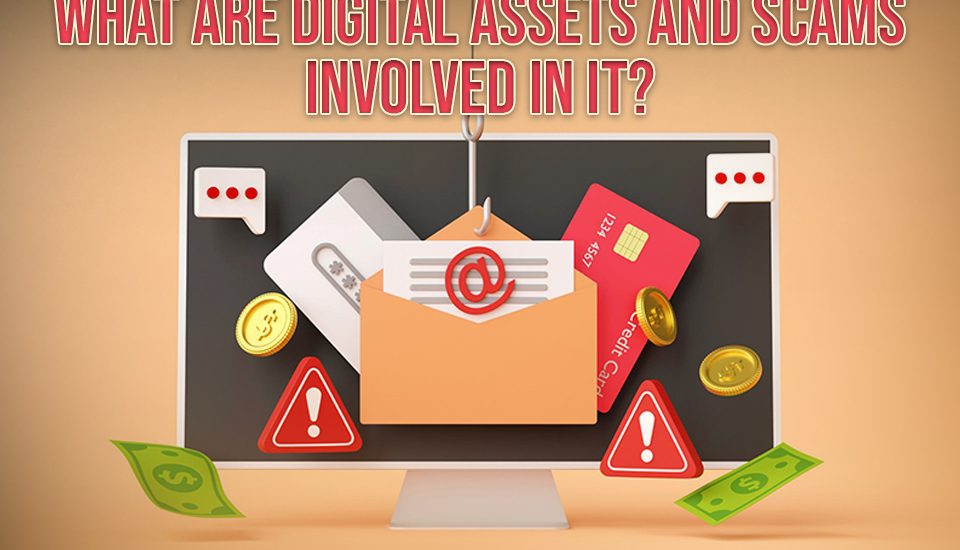A digital asset is any form of information or data that has value and can be owned or controlled by an individual, organization, or entity. Digital assets can take many forms, including digital currencies, digital art, music, videos, ebooks, software, domain names, social media accounts, and more. These assets are stored and transferred digitally, usually through the Internet or other computer networks, and can be accessed and used by authorized parties.
Digital assets often refer to cryptocurrencies such as Bitcoin, Ethereum, and others which are decentralized digital currencies that use blockchain technology to enable secure transactions without intermediaries.
What are the examples of digital assets?
There are several examples , including:
- Cryptocurrencies are digital currencies that use cryptography to secure transactions ex: Bitcoin, Ethereum, and Ripple.
- Tokens also come under digital assets representing assets and are issued on blockchain platforms.
- Any art or graphic created digitally or distributed digitally is also considered a digital asset. Ex: NFTs (Non-Fungible Tokens) that represent unique digital art pieces.
- Domain names are also digital assets as they are online identities for websites.
- Digital real estate is an emerging trend of assets in digital, where virtual properties and spaces are sold to customers. Ex: a person can sell a space on the moon to a customer via digital real estate.
- E-books: Electronic books that can be downloaded and read on digital devices like smartphones, tablets, and e-readers.
These are just a few examples of these assets, and the list is constantly growing as new forms of assets are created and adopted.
Scope of scams in digital assets
All social media platforms/digital platforms serve as an instrument for scammers to loot money or any digital asset from investors. The Federal Trade Commission (FTC) advises investors or commoners who deal with digital assets that scammers demand payment in digital assets where no legit businesses ask for digital assets in exchange to buy something.
Red flags to identify digital asset scams?
- Any sort of tweet, email, or message from social media like Instagram, Snapchat, or Facebook requesting direct payment of digital assets should be considered a scam.
- Fake digital assets wallets are one of the most commonly used techniques by fraudsters. legitimate digital asset wallets can be visually imitated with the help of software. Digital asset wallets should be thoroughly checked before accepting the terms with the wallet.
- Fake digital asset exchanges could appear to be genuine but are not and further or prolonged interactions with them will result in the scammer having access. So, investors should be careful before approaching new digital asset exchanges.
- Cloud mining companies deceive commoners by promising them to mine assets instead they take the individuals’ funds and do not provide mining access.
- High investment returns that are "guaranteed" with little or no risk should be viewed as a red flag for fraud. To lure in potential victims, fraudsters may post falsified historical returns on their websites.
- Be cautious of unlicensed or unregistered sellers offering securities as they frequently target retail investors in securities fraud. Before investing, use the search tool on Investor.gov to check the background and license/registration status of anyone offering an investment.
- Beware of depictions of rapidly increasing account values, as this is often a tactic used by fraudsters to attract investors with the prospect of significant wealth. Keep in mind that investment returns generally involve high risk.
- Fake testimonials should never be relied upon when making investment decisions. Fraudsters may pay individuals, including actors, social media influencers, or celebrities, to promote investment on social media or in a video.
Techniques used by scammers in digital asset scams
- Scammers use multiple addresses of digital asset wallets, and they create a unique address for each transaction they make, and thus it is difficult to trace.
- Scammers use algorithms to mix digital assets to mask the transaction history.
- Scammers make use of utilize privacy coins that have anonymity features that can hide amounts/addresses.
- Dark exchanges are another means for scammers, where funds once get co-mingled in an exchange can’t be retrieved. A dark exchange operates outside of the U.S.
- Trade digital assets for cash: trading a semi-anonymous digital asset for an anonymous asset/cash is difficult to trace.
- Scammers also use software where they can steal digital assets with the help of the software. Malware is software where scammers. Malware is a malicious program that is used to steal digital assets by capturing keystrokes, accessing sensitive information, etc.
